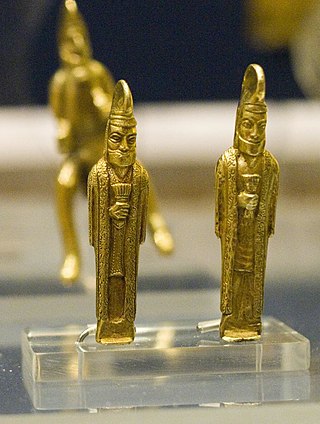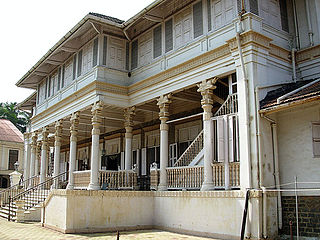
Zoroastrianism is an Iranian religion and one of the world's oldest organized faiths, based on the teachings of the Iranian-speaking prophet Zoroaster. It has a dualistic cosmology of good and evil within the framework of a monotheistic ontology and an eschatology which predicts the ultimate conquest of evil by good. Zoroastrianism exalts an uncreated and benevolent deity of wisdom known as Ahura Mazda as its supreme being. Historically, the unique features of Zoroastrianism, such as its monotheism, messianism, belief in free will and judgement after death, conception of heaven, hell, angels, and demons, among other concepts, may have influenced other religious and philosophical systems, including the Abrahamic religions and Gnosticism, Northern Buddhism, and Greek philosophy.

Zoroaster, also known as Zarathustra, is regarded as the spiritual founder of Zoroastrianism. He is said to have been an Iranian prophet who founded a religious movement that challenged the existing traditions of ancient Iranian religion, and inaugurated a movement that eventually became a staple religion in ancient Iran. He was a native speaker of Avestan and lived in the eastern part of the Iranian plateau, but his exact birthplace is uncertain. He founded the first documented monotheistic religion in the world and also had an impact on Plato, Pythagoras, and the Abrahamic religions – Judaism, Christianity, and Islam.
The Iranian calendars or Iranian chronology are a succession of calendars created and used for over two millennia in Iran, also known as Persia. One of the longest chronological records in human history, the Iranian calendar has been modified time and again during its history to suit administrative, climatic, and religious purposes. The most influential person in laying the frameworks for the calendar and its precision was the 11th century Persian polymath, hakim Omar Khayyam. The modern Iranian calendar is currently the official civil calendar in Iran and Afghanistan.
Haoma is a divine plant in Zoroastrianism and in later Persian culture and mythology. Haoma has its origins in Indo-Iranian religion and is the cognate of Vedic soma.

Magi are priests in Zoroastrianism and the earlier religions of the western Iranians. The earliest known use of the word magi is in the trilingual inscription written by Darius the Great, known as the Behistun Inscription. Old Persian texts, predating the Hellenistic period, refer to a magus as a Zurvanic, and presumably Zoroastrian, priest.

A dakhma, also known as a Tower of Silence, is a circular, raised structure built by Zoroastrians for excarnation, in order to avert contamination of the soil and other natural elements by the dead bodies. Carrion birds, usually vultures and other scavengers, consume the flesh. Skeletal remains are gathered into a central pit where further weathering and continued breakdown occurs.
Zoroastrian Dari is a Persian dialect and a Northwestern Iranian ethnolect.

Cupressus sempervirens, the Mediterranean cypress, is a species of cypress native to the eastern Mediterranean region and Iran. Cupressus sempervirens is a seeded vascular plant, meaning that it contains both xylem and phloem. Since it is a seeded plant, it uses seeds to reproduce. It has many uses that can contribute to medicine and other things that are beneficial, whether that be the seeds that it produces or the oil that comes from the leaves. It is well adapted to the environment that it lives in. Cupressus sempervirens is widely present in culture, most notably in Iran, where it's both a sacred tree and is a metaphor for "the graceful figure of the beloved".
Pir refers to a site of pilgrimage, typically one of the Zoroastrian faith, in Persian. Pirs range from localized devotional sites to major centers of worship. Among the most well-known pirs are the six mountain pir which can be found in and around the city of Yazd, Iran: Seti Pir, Pir-e Sabz, Pir-e Nāraki, Pir-e Bānu, Pir-e Herisht, and Pir-e Nārestān. However, pirs can be found in cities throughout the Persian world including Kerman, Shiraz and Tehran.

The Faravahar, also known as the Foruhar (فروهر) or the Farre Kiyâni, is one of the best-known symbols of Zoroastrianism, an Iranian religion. There are various interpretations of what the Faravahar symbolizes, and there is no concrete universal consensus on its meaning. However, it is commonly believed that the Faravahar serves as a Zoroastrian depiction of the fravashi, or personal spirit.

Kashmar is a city in, and the capital of, the Central District of Kashmar County, Razavi Khorasan province, Iran, and also serves as capital of the county. Kashmar is located near the river Shesh Taraz in the western part of the province, and south of the province's capital Mashhad, in Iran, from east to Bardaskan, west to Torbat-e Heydarieh, north to Nishapur, south to Gonabad. Until two centuries ago, this city was named Torshiz (ترشیز).

Zoroastrianism is the oldest remaining religion in Iran. Founded around the middle of the second millennium BCE, the religion spread through the Iranian area through conversions and eventually became state religion in the Achaemenian Empire in the 6th century BCE. The religion still survives to this day in small communities, mostly located in present Iran and India. The Zoroastrians in India are called Parsis.

Zoroastrianism in Azerbaijan goes back to the first millennium BC or earlier and was the predominant religion of Greater Iran before the conversion to Islam.

The persecution of Zoroastrians has been recorded throughout the history of Zoroastrianism, an Iranian religion. The notably large-scale persecution of Zoroastrians began after the rise of Islam in the 7th century CE; both during and after the conquest of Persia by Arab Muslims, discrimination and harassment against Zoroastrians took place in the form of forced conversions and sparse violence. Muslims who arrived in the region after its annexation by the Rashidun Caliphate are recorded to have destroyed Zoroastrian temples, and Zoroastrians living in areas that had fallen under Muslim control were required to pay a tax known as jizya.

The Cypress of Abarkuh, also called the Zoroastrian Sarv, is a Persian cypress tree in Abarkuh in Yazd Province of Iran. It is protected by the Cultural Heritage Organization of Iran as a national natural monument and is a major tourist attraction with a height of 25 metres and with a perimeter of 11.5 metres at its trunk and 18 metres higher up around its branches. It is estimated to be over four millennia old and is likely the oldest or second-oldest living lifeform in Asia.

The Zand-i Wahman Yasn is a medieval Zoroastrian apocalyptical text in Middle Persian. It professes to be a prophetical work, in which Ahura Mazda gives Zoroaster an account of what was to happen to the behdin and their religion in the future. The oldest surviving manuscript is from about 1400, but the text itself is older, written and edited over the course of several generations.

Zoroastrianism is a religion which has been practiced in the West Asian country of Armenia since the fifth century BC. It first reached the country during the Achaemenid and Parthian periods, when it spread to the Armenian Highlands. Prior to the Christianization of Armenia, it was a predominantly Zoroastrian land. The yazatas (deities) Mithra (Mihr) and Verethragna (Vahagn) particularly enjoyed a high degree of reverence in the country.

The Iranshah Atash Behram, also known as the Udwada Atash Behram is a sacred fire housed in a temple in Udvada, Gujarat on the west coast of India. It is the first of the eight fire temples of the Zoroastrian religion in the country. The Atash Bahram, meaning "Victorious Fire", is the oldest fire temple in India, dated to the eighth century, and represents the historical cultural and religious links with Iran. The current temple housing the sacred fire was built in 1742 by Motlibai Wadia from Bombay. The temple structure, built spaciously, is well decorated and contains the Dasturji Kaiyoji Mirza hall and a museum. The main hall of the temple is accessed through a two-stage staircase. The temple attracts Zoroastrian pilgrims from all parts of India, Pakistan, and from around the world.

Ancient Iranian religion or Iranian paganism was the ancient beliefs and practices of the Iranian peoples before the rise of Zoroastrianism. The religion closest to it was the historical Vedic religion that was practiced in India. The major deities worshipped were Ahura Mazda and Mithra from Iran to Rome, but Atar was also worshipped, as names of kings and common public showing devotion to these three exist in most cases. But some sects, the precursors of the Magi, also worshipped Ahura Mazda, the chief of the Ahuras. With the rise of Zoroaster and his new, reformatory religion; Ahura Mazda became the principle deity and the Daevas were relegated to the background. A lot of the attributes and commandments of Varuna, called Fahrana in Median times, were later attributed to Ahura Mazda by Zoroaster.
Sangan Zarbin Cupressus is a 3,212-year-old cypress tree located in Sistan and Baluchestan province, 45 km from Khash city with a height of about 30 meters and a trunk diameter of 3 meters. This cypress tree is registered as one of the national natural monuments of Iran and the life of it is estimated to be about 2000 years.









